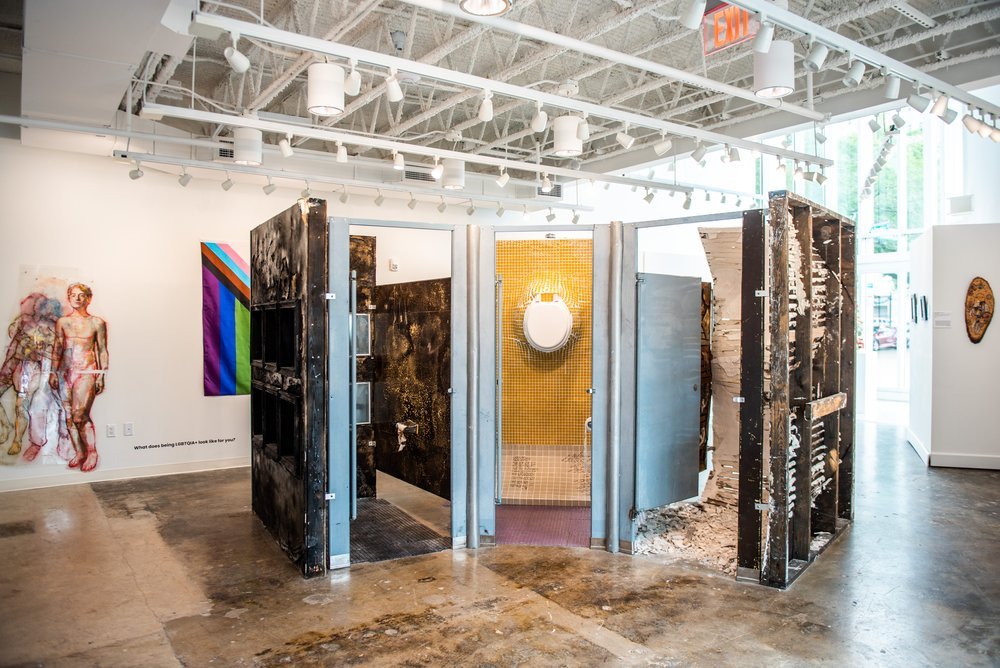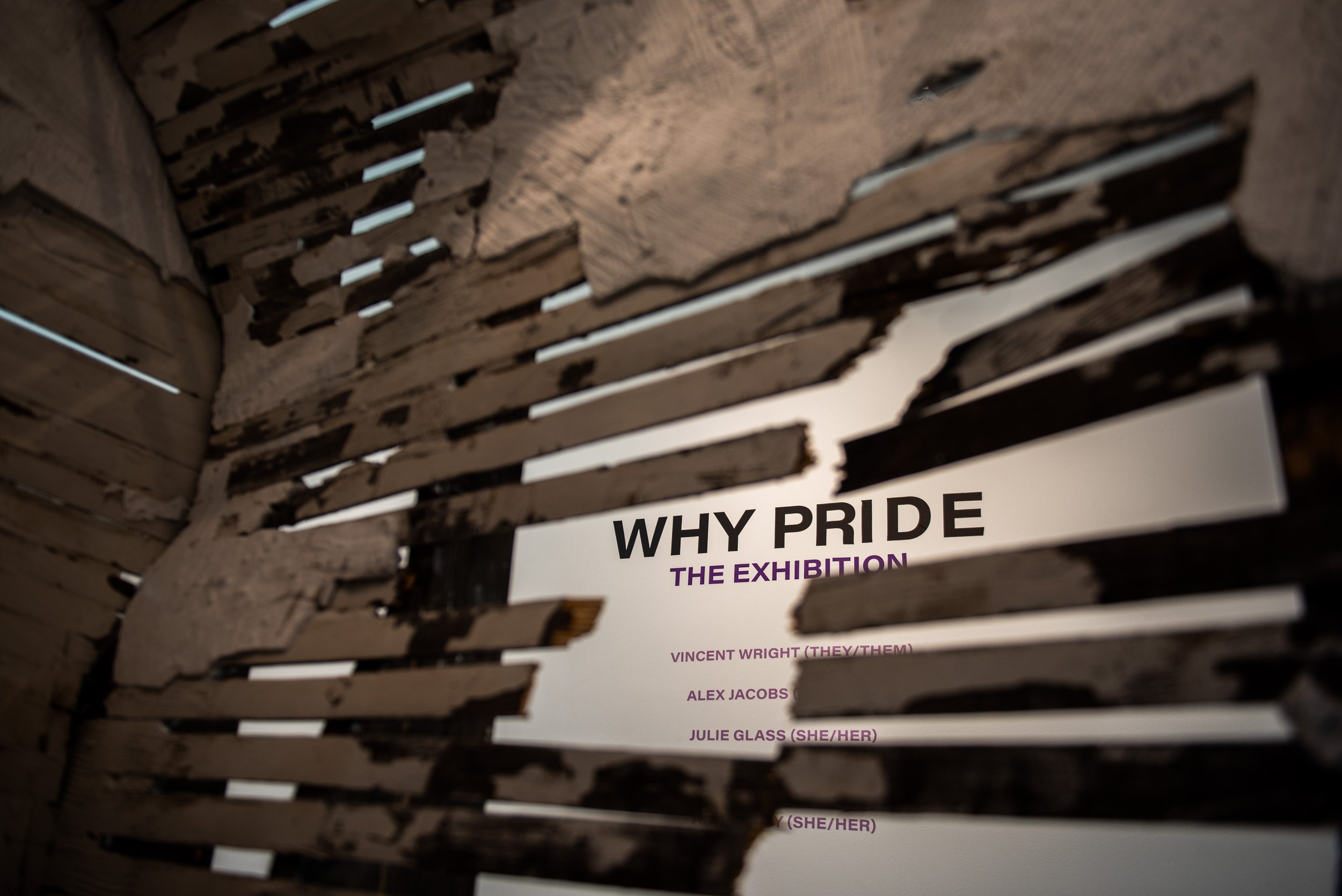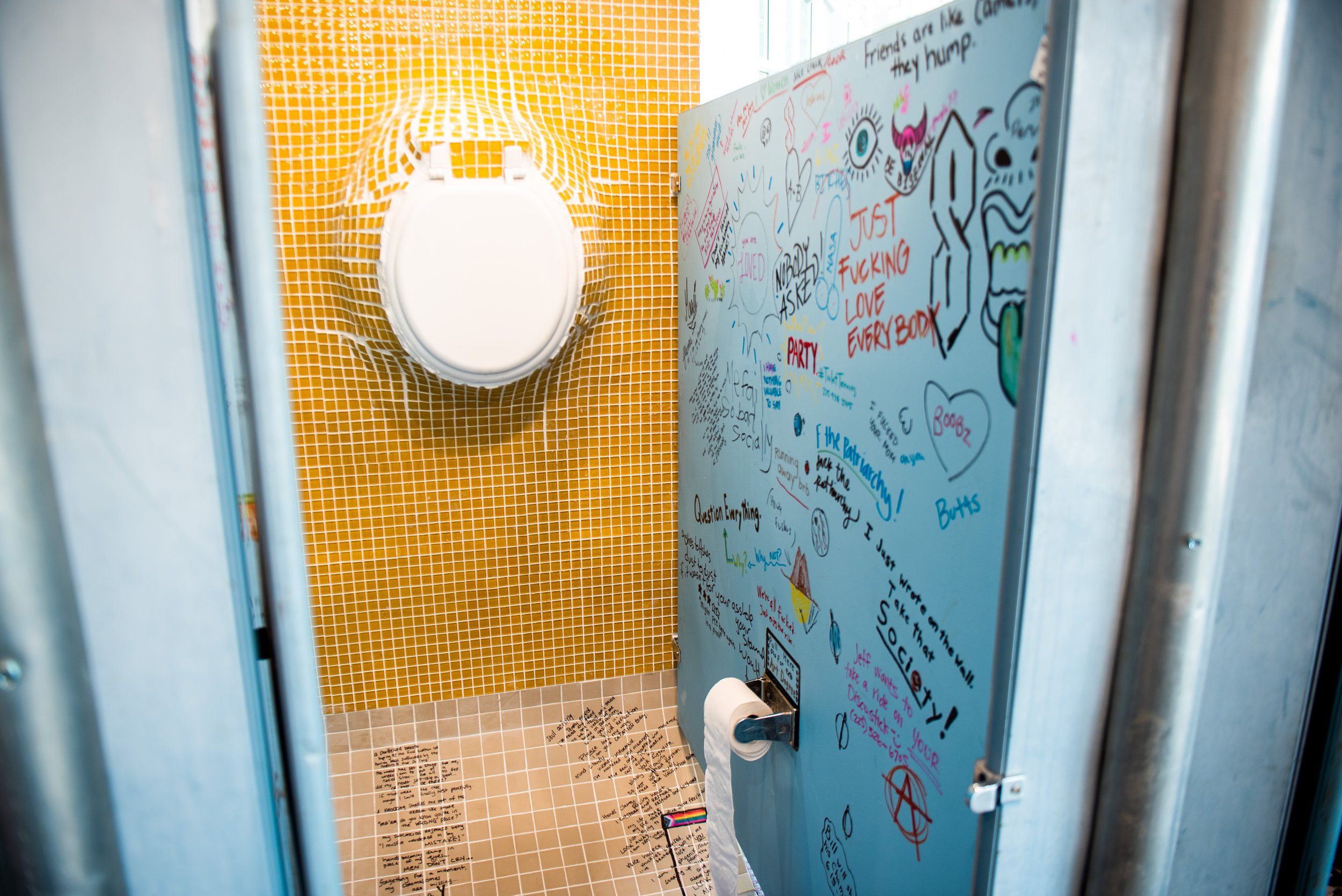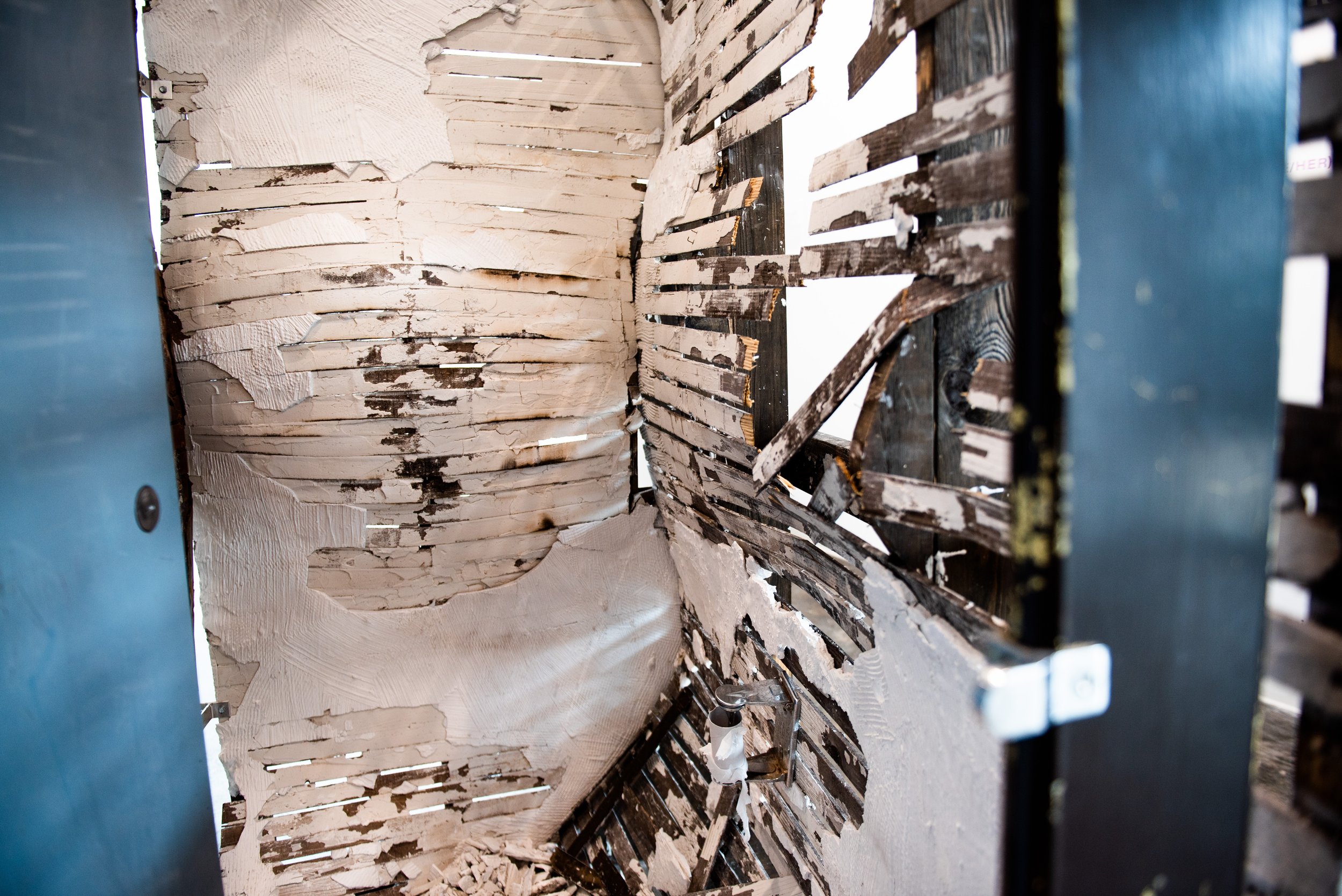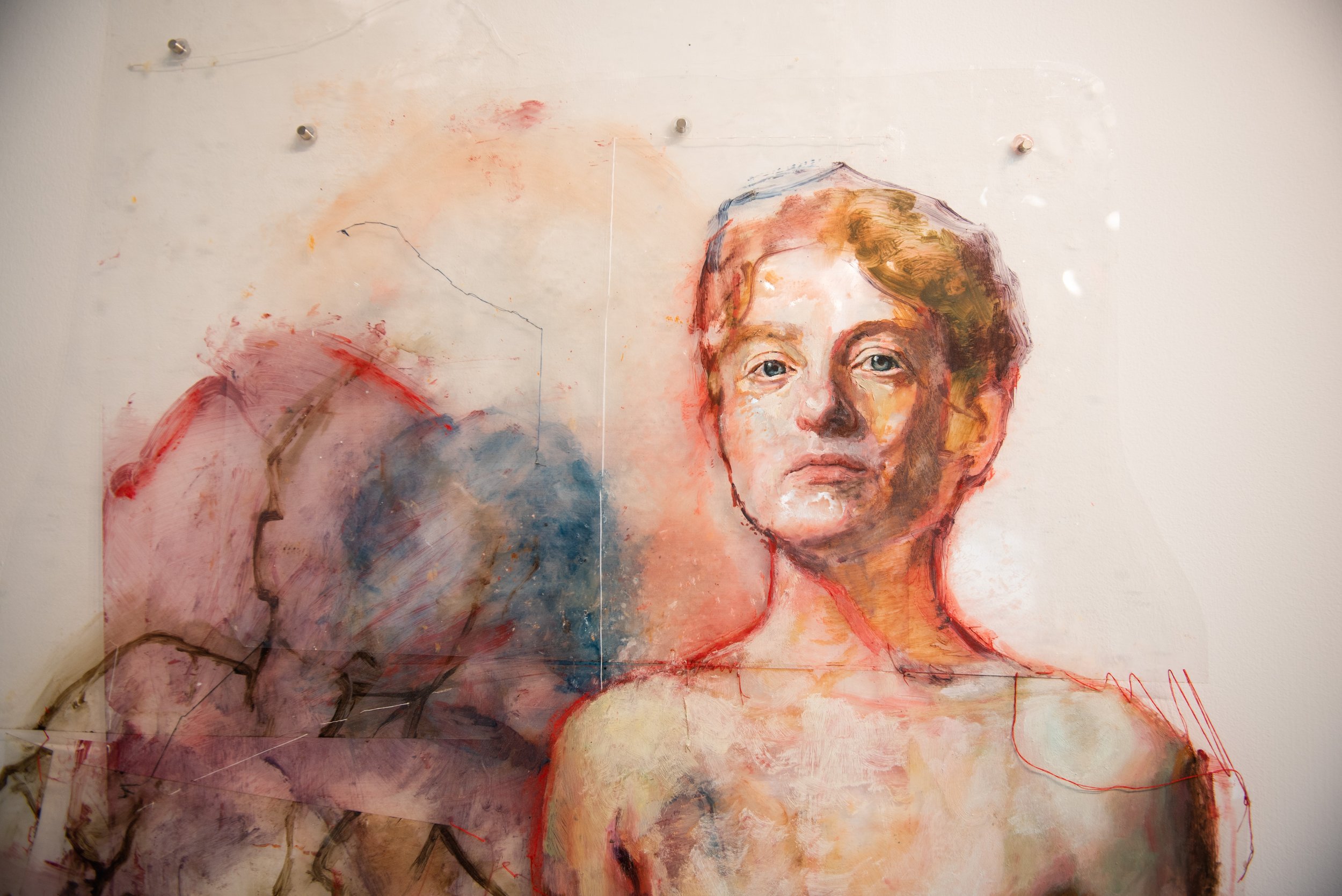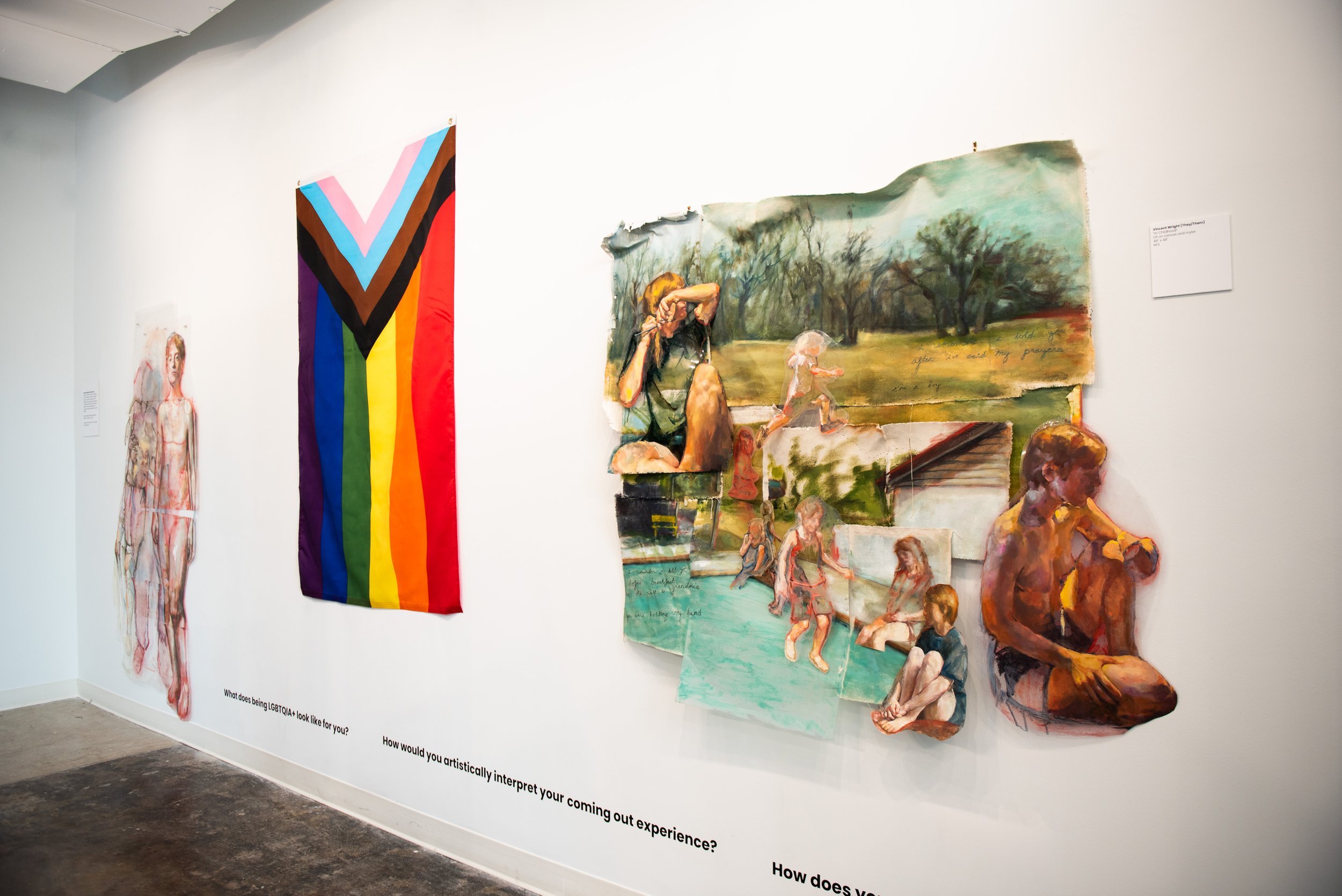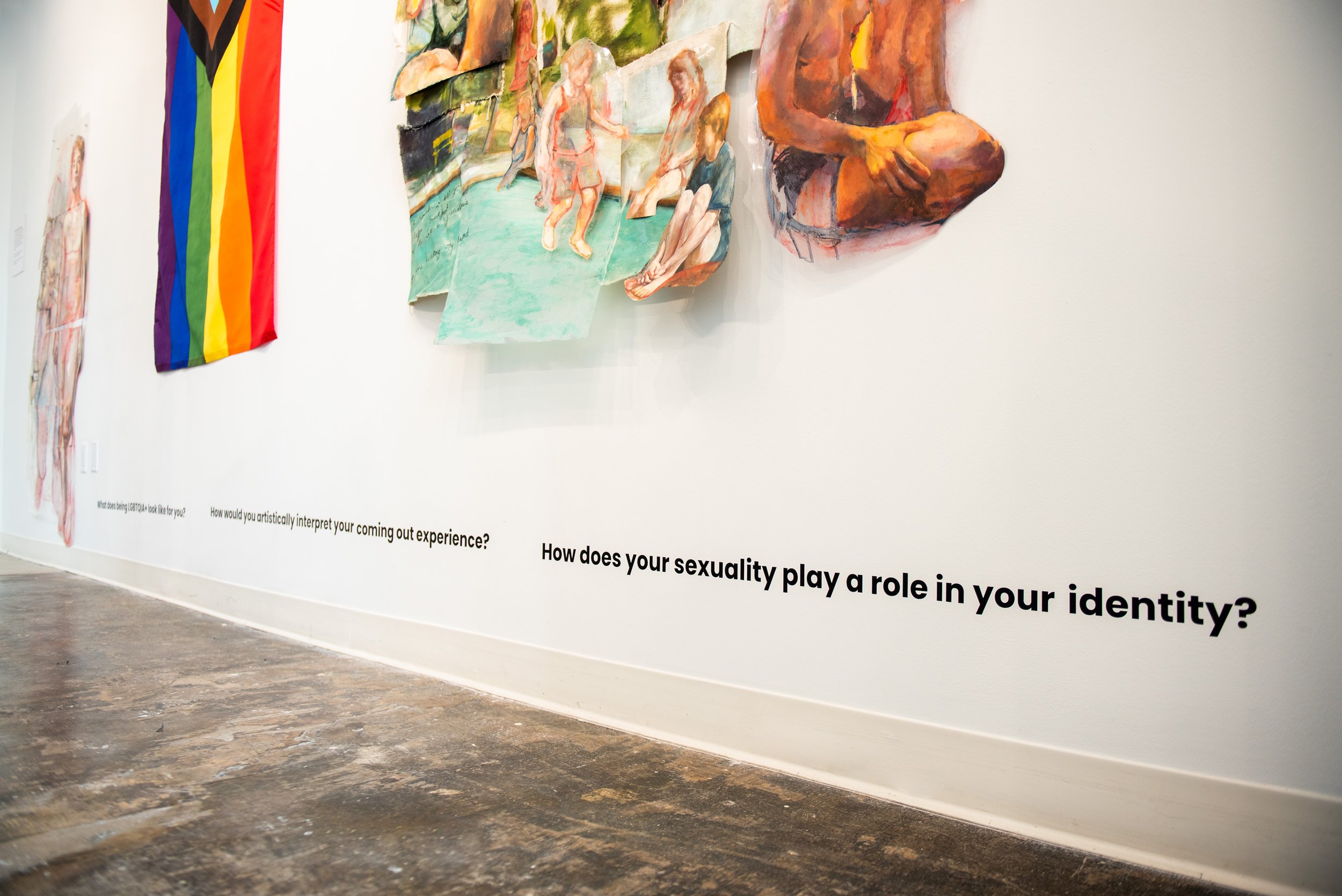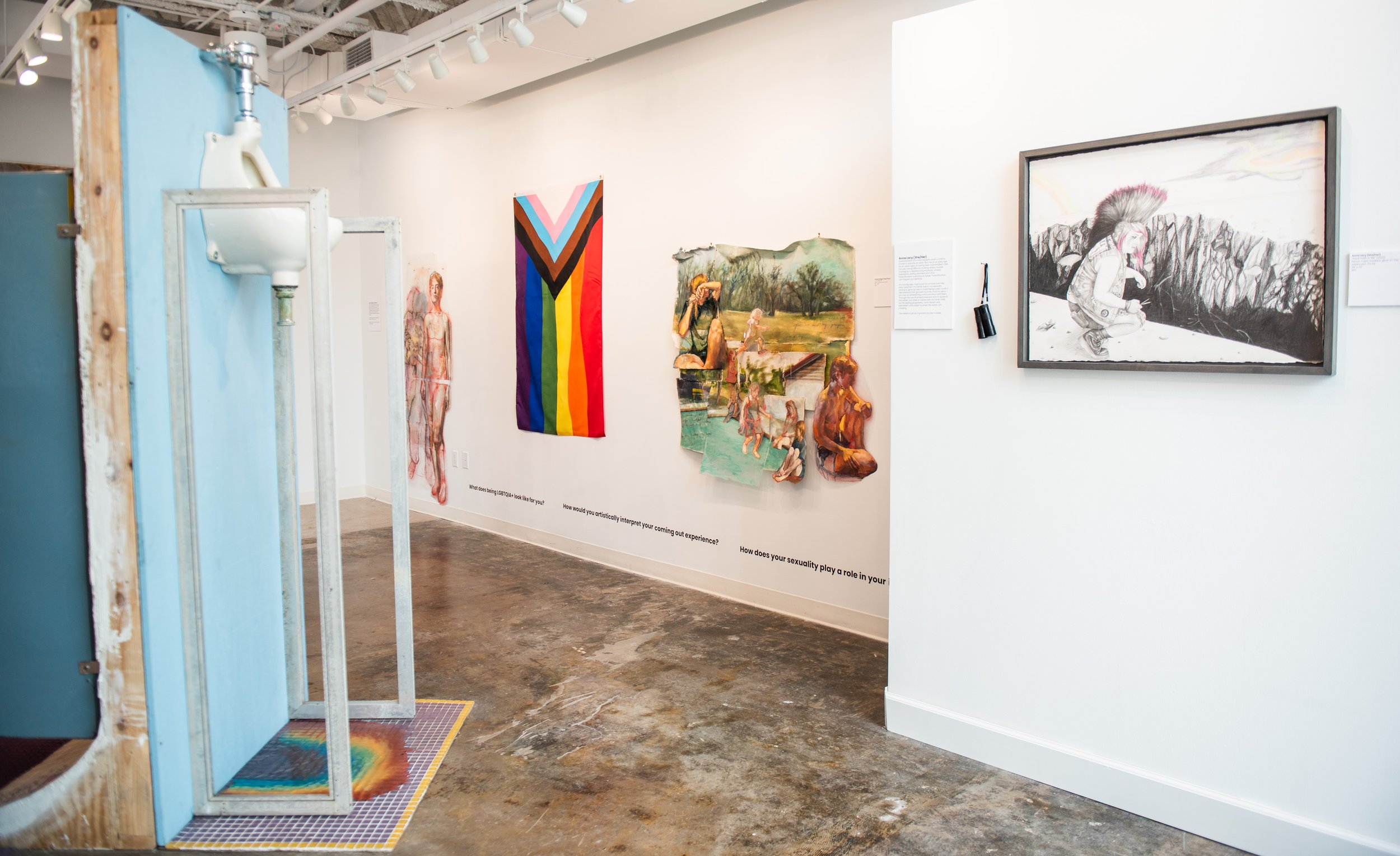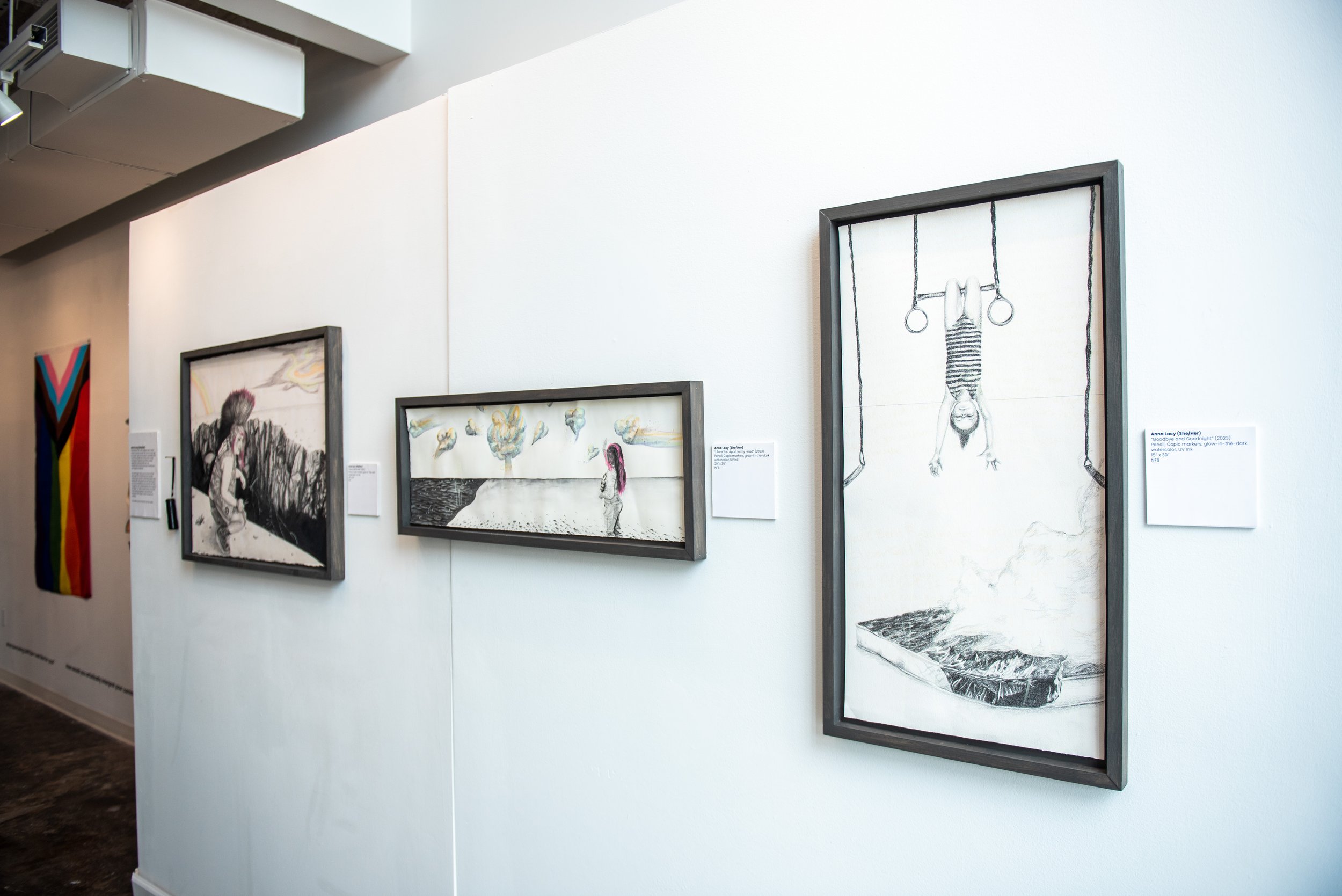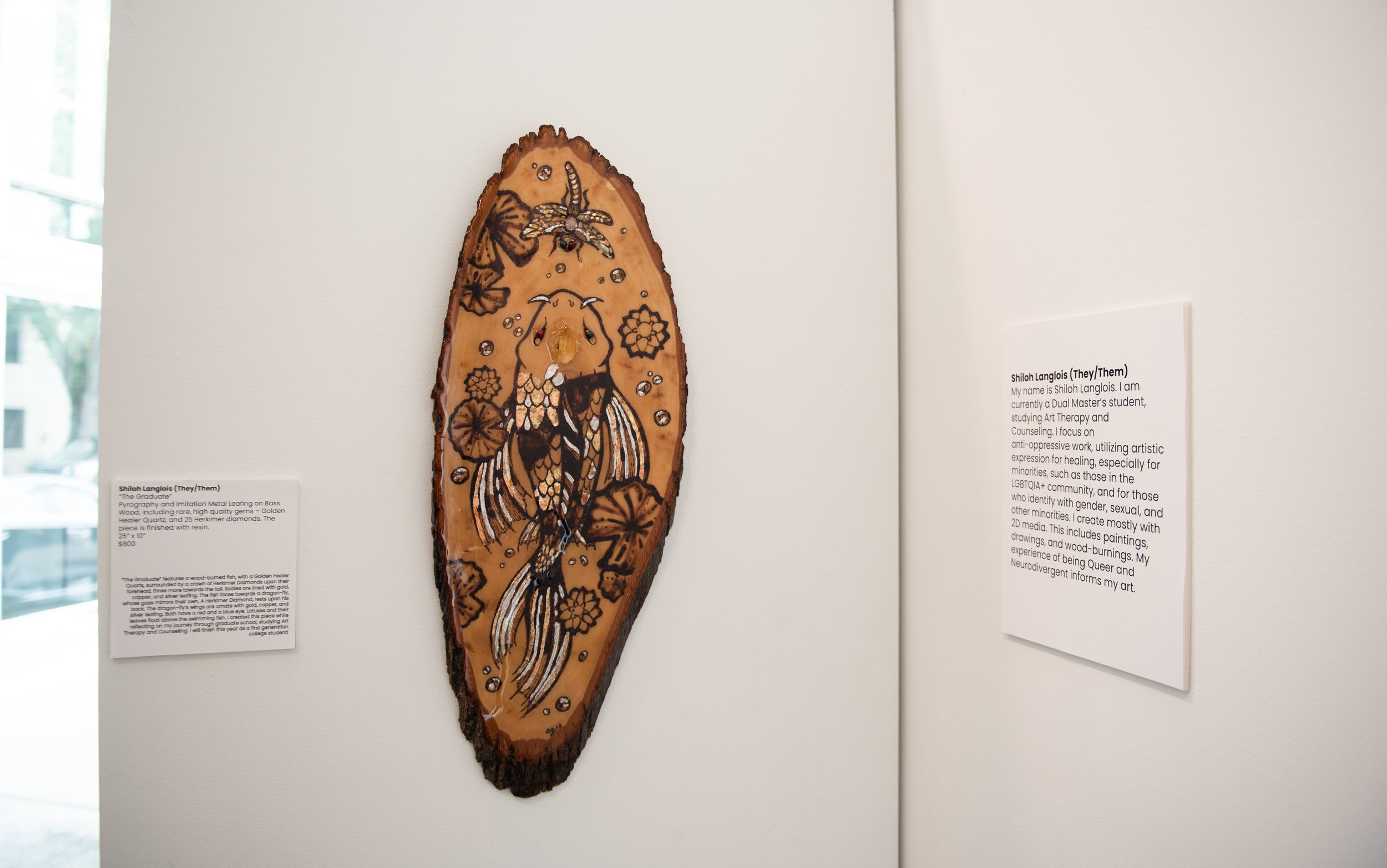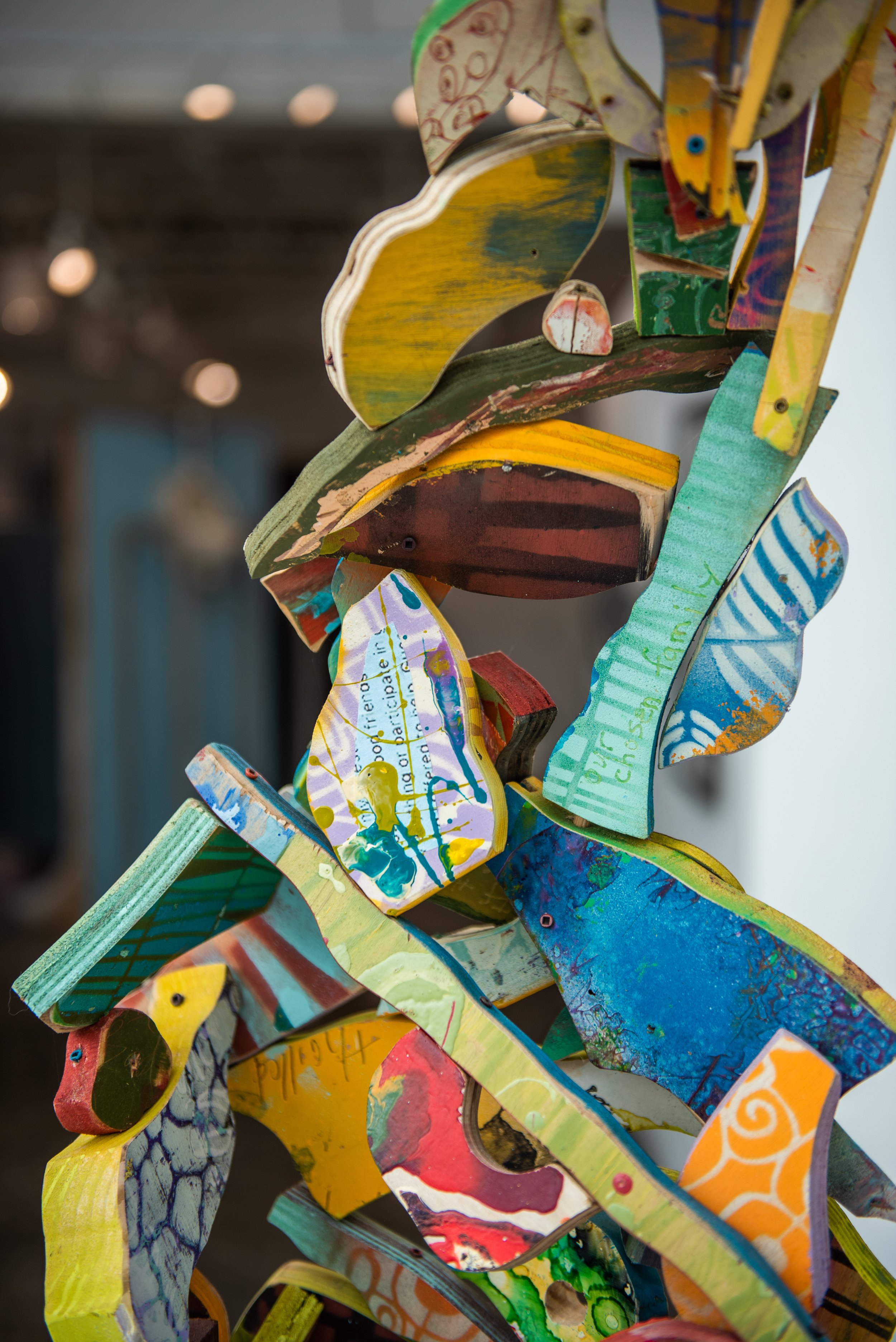capturing moments, curating experiences, & creating community.
Charlie Champagne is a creative entrepreneur passionate about photography & design, event production, and community collaboration.
WHY PRIDE
Photodocumentation of the WHY PRIDE LGBTQIA+ arts exhibition presented by The Arts Council of Greater Baton Rouge inside the Shell Gallery located at the Cary Saurage Community Arts Center. Photos by Charles Champagne.
2023 Pride Month Exhibition presented by The Arts Council of Greator Baton Rouge, held inside the Shell Gallery located at the Cary Saurage Community Arts Center.
This Pride month, I sat down with Lundyn Herring, the Director of Visual Arts at the Arts Council of Greater Baton Rouge as well as the exhibitions participating artists to talk more about the recent LGBTQIA+ exhibition, WHY PRIDE.
Q : “Can you tell me a little bit about how this show came about?"
Lundyn : “Originally, my vision for the show was to partner with The Trevor Project, and get stories of victims of suicide, via their families, and use those stories in tandem with the artwork — stories of these people who have taken their lives due to all the existing prejudice, and with that, be juxtaposed next to all this beautiful art inspired by everyone’s identities. Unfortunately that original plan fell through, but then I met Alex about a month before this show was planned to go up, and I saw how amazing the bathroom sculpture was and knew that had to be included. Anna Lacy and Vincent have shown with us before, and it’s been amazing watching how they’ve grown as artists. So, it was great to have them involved again for this year’s Pride month show.”
“This exhibition kind of came into fruition as I began meeting more people and started immersing myself more in the Baton Rouge community. Even though I am a lesbian myself, I haven’t been a lesbian out in Baton Rouge in a very long time. It was nice to get back into the local queer scene, and meet a bunch of new people, especially all of the young queer people. It was very heartwarming. ”
Alex Jacobs (He/They)
Q : “Tell me more about your piece in the show.”
Alex : “This work was conducted in collaboration with my partner. I constructed it as a physical manifestation of their writing and experiences as a non-binary person navigating a straight cisgender world. As an outsider on the inside, I have the unique opportunity to physically manifest their writing and our shared experience in a physical space for others to inhabit.
Whether at work, school, the store, or on a road trip, using a public restroom is rarely a comfortable situation to find oneself in. This necessary part of life can be extremely awkward for anyone. However, for some people, using a public restroom can be terrifying. Throughout my life as a cisgender man I spent very little time thinking about using a public restroom. I have always tried to abide by the expected decorum of the men’s room, such as proceeding to the stall farthest from the door and always leaving a buffer zone at the urinals. However, I learned that this was not the case for my partner. “
Alex : “They have been receiving gender-affirming care for several years. Currently, they are at a point in their transition, where, on any given day, they could be viewed as either male or female. This can make what should be a simple task – using a public restroom – extremely hazardous to not only their mental health but also to their physical health.
To help alleviate some of the stress that they experience using public restrooms my partner and I have developed a routine for when we are out or on a road trip. When my partner states “I need to [go]”, I reply with “Are you going, or are we?” Their answer is often determined by where we are when nature calls.
“The installation aims to question the audience's perspective in a time of polarization to find a connection despite that which divides, by humanizing a community that is vilified by political leaders. To pose this question, I created a space in which the audience sees, feels, and hears an unfamiliar experience in a recognizable place.”
Q : Why do you believe this show is important?”
Alex : “WHY PRIDE creates a platform for the community that will hopefully humanize our stories and experiences. This show is a celebration of Pride. It is a promotion of self-affirmation, dignity, equality, and visibility. “
Q :“How important is it to you, to be able to not only make art, but to make art that reflects who you are as a person?”
“It is my belief that art is a means for self-expression. A way to communicate the ideas or beliefs one holds most dear. The creation of art is my chosen platform to speak to the world, and to the issues that I feel must be addressed in order to make the world a better place for everyone.”
Vincent Wright (He/They)
Q : Tell me more about your pieces in the show.
Vincent : “My work mainly focuses on growing up in the religious south of the United States as a queer person. I explore my identity and who I am in the context of growing up in a restricted hyper religious household.”
“As a trans individual, girlhood was something I found myself not quite fitting in, and boyhood was something that I longed for. I remember feeling a deep sense of shame for how I felt and jealousy for not being able to do the things my brother could. My paintings reflect the question, “What if I was born a boy?”. I explore what could’ve been, what was, and what is.”
“Repudiate (tranny) is an exploration of transitioning as a trans person. It consists of a series of self- portraits from childhood to adulthood layered on top of each other and held together by thread. The painting was created at the same time anti-trans laws were being passed (they still are) and when the trans body was becoming more of a political and moral debate.”
“There are significant gaps in my childhood memories, but I often remember not feeling real and not understanding myself or having the words to express my troubles. I am interested in the past and identities. They are both hard for me to fully understand or grasp. I paint figuratively with oils on repurposed canvas, children’s clothes, and transparent plastic sheets that I layer onto my paintings. I also used visible mending and stitches to hold it together. The end result resembles a puzzle—the stitching ties in with the idea of mending and creating something new from the past.
I am trying to fix something that has broken down over time and rediscover myself. In the end, my work is an exploration of gender, whether that be the past, present, or Future.”
Q : “Why do you believe this show is important?”
Vincent : “This show is important due to the political climate and the escalating LGBTQIA+ hate. Queer representation in the South can often become overlooked. This show also allows viewers to understand/ sympathize with queer identities.”
Q : “How does your practice play a role in your identity?”
Vincent : “I use painting to process my identity and create a world of hypotheticals. Painting self- portraits has allowed me to see myself from various perspectives. Utilizing stitching, old clothes, and images from childhood has allowed my work to become a reflective process. To be an artist, you must question the status quo and the rules that society has pushed on you. Being genderqueer is like the process of painting; it is an act of becoming.
Q : “How important is it to you, to be able to not only make art, but to make art that reflects who you are as a person?”
Vincent : “It is very important. It is what I put into the world and what others perceive me. I find it it is difficult to talk about my identity directly. Instead, my paintings are an outlet for my true identity. It is my goal that others will see themselves in my work.”
Q : “What do you hope people take away from this show?”
Vincent : I hope people will walk away with a more nuanced understanding of being queer and how it can be expressed. I believe that the audience would come out with a better understanding of queer struggles. I also hope they can relate to the pieces in the show and see the beauty in being queer.
Trash (Anna) Lacy (She/Her)
Q : “Why do you believe this show is important?”
Trash : “Shows like Why Pride are important because it gives a voice to artists who deal with the topic of sexuality in their work or whose sexuality has affected how they create work. It also shows lgbtq+ youth that their voice matters and that they aren’t alone in the world.”
Q : “How does your practice play a role in your identity?”
Trash : “I have been creating work that fits in the Magical Realism movement and has been helping me work through finding myself again. I like to make small sketches and then the pieces tell me how big or small they should be based on the sketch. I use photos of myself a lot and since I started doing that it has started helping me become more confident in what I wear and how I express myself.”
Q : “How important is it to you, to be able to not only make art, but to make art that reflects who you are as a person?”
Trash : “Being able to make work that reflects who I am as a person has helped me get back in touch with my inner child. They got hidden away years ago when I was focusing on hiding my sexuality from my family. This has helped me be able to work through a lot of my anxiety and depression and also helped me stop caring so much about what people think of me.”
Q : “What do you hope people take away from this show?”
Trash : “I hope they take away from this show that it’s OK to be gay and that when you hide that away you’re hiding yourself.”
Q : “Is there anything else you’d like to share?”
Trash : “Like my work there is more to it than just what’s on the surface. You have to look in the correct lighting to get the full story.”
Shiloh Langlois (They/Them)
Q : “Why do you believe this show is important?”
Shiloh : “I believe this show is important because it facilitates conversations between artists who identify as LGBTQIA+ and the community.
Shapes, colors, forms, and texture translate to viewers' thoughts, emotions, memories, etc. Personal projections about the way we view and experience the world are projected onto the art.
It opens up dialogue about how we experience the world similarly and differently. It allows us to look at intersections such as sexuality, gender, neurodivergence, race, culture, etc.”
Q : “How does your practice play a role in your identity?”
Shiloh : “My practice, as both an artist and art therapist, helps to define who I am. A saying by Picasso goes something like - I make art because I have to, not because I want to. I feel like it is a must for my survival.”
Q : “How important is it to you, to be able to not only make art, but to make art that reflects who you are as a person?”
Shiloh: “It is impossible for me to make art that does not reflect who I am. I really feel like my creativity is sporadic - almost like it's a being that resides inside of myself, rather than just a component of Shiloh. One of the reasons I didn't go to a formal art school is because of this inability to control exactly when it happens. It causes me extreme stress and anxiety to create when I do not feel the "flow." Art Therapy school is not the same as formal training in technique.”
Q : “What do you hope people take away from this show?”
Shiloh : “I hope that people take away whatever comes to them from the show. As an art therapist, I learn to accept that people find their own meanings, which can be intimate and very personal. I am less attached to the result, but being able to express my work publicly does feel relevant at this point in time.“
Julie Glass (She/Her)

